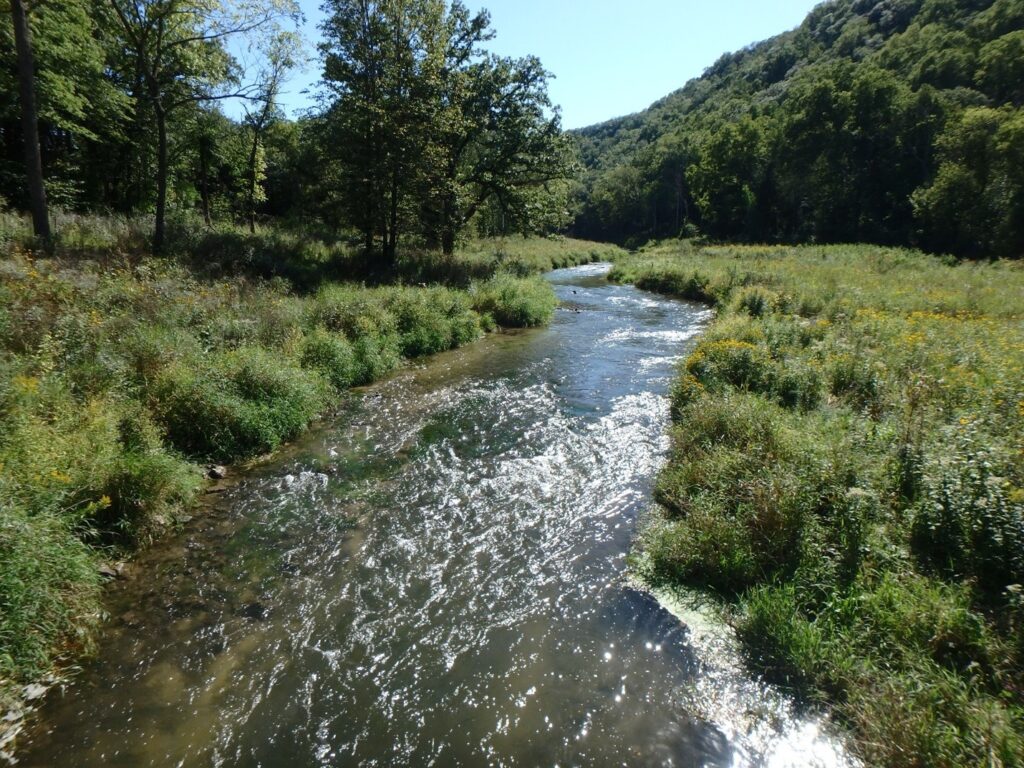Habitat Spotlight: Why Riffles Matter So Much
By Dr. Jennifer Biederman
If there is one thing that many degraded streams across Minnesota have in common, it’s a lack key habitat types that support trout of all stages and ages. Many degraded streams lack riffle habitat. These shallow, fast-flowing sections of a stream, characterized by their choppy water surface and exposed substrates, contribute to several ecological processes that support a thriving ecosystem and are particularly important as spawning grounds for trout. Increased sedimentation from erosion, agricultural runoff, or urban development can bury the gravel substrates that make up riffles, and alterations to the stream channel, such as straightening or widening, often eliminate riffles by creating uniform, slower-moving water.

When designing a habitat improvement project, exposing and adding riffles are a top priority. Here are a few of the benefits riffles provide in a healthy stream ecosystem:
- Oxygen
One of the most critical reasons why riffles are vital in trout streams is their role in oxygenating the water. As water flows quickly over rocks and uneven substrates, it becomes aerated, increasing the dissolved oxygen levels in the stream. Trout, especially species like brook trout, require highly oxygenated water for survival, particularly during warmer months when oxygen levels drop. Riffles provide this constant flow of oxygen-rich water, making them prime spots not only for feeding but also for spawning. Trout use these well-oxygenated areas to lay their eggs, ensuring the eggs receive the oxygen they need to develop properly. The clean, well-aerated gravel beds found in riffles are ideal for protecting trout eggs from being smothered by fine sediments, creating a safer environment for the next generation of trout.

2. Food production
In addition to being a key spawning habitat, riffles serve as critical feeding grounds. The gravel, cobble, and rocky substrate in riffles provides shelter and habitat for a diverse variety of aquatic macroinvertebrates, such as mayflies, caddisflies, and stoneflies, which are a primary food source for trout. The fast-moving water creates the ideal environment for these insects, and their abundance in riffles ensures a consistent supply of food for adult trout. As trout seek out these insects, riffles become prime hunting zones, offering both food and refuge. A key focus of our habitat improvement designs is to expose and create new riffle habitat, boosting the food production that can feed an increasing trout population post project.
3. Spawning and nesting
Trout utilize riffles in streams to create spawning beds, known as redds. During the spawning season (autumn for brook trout and brown trout in Minnesota), female trout swim to riffles where the fast-moving, oxygen-rich water helps to keep the environment clean and free from silt, which is crucial for the survival of their eggs. The female trout will select a suitable location in the gravel substrate of the riffle, using her tail to excavate a shallow nest. This process helps to dislodge any debris and create a depression where she can lay her eggs. The flowing water in riffles also ensures that the eggs are well-aerated, promoting healthy development. Once the eggs are laid and fertilized by the males (who are following closely behind), the female will cover them with gravel, further protecting them from predators and ensuring they remain in a safe, clean environment until they hatch in late winter or early spring. Creating this spawning habitat is a key part of boosting trout populations in streams that support lower abundances.

